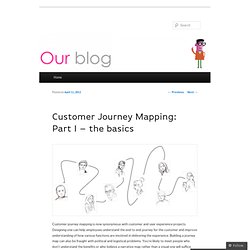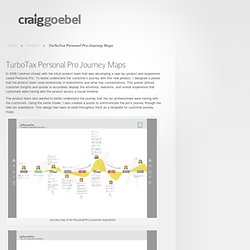

Three Steps to Defining and Mapping the Customer Journey. Gaining visibility into a customer’s buying journey is nothing new to marketers. In fact, understanding the journey has been a standard practice since the time marketers primarily distributed messages through print ads — and with good reason. The patterns in the buying journey inform the creation of enticing and relevant messaging that anticipates the next customer action and elicits the desired response.
Today, mobile devices, new data-capturing technology, solutions for processing big data and integration of multiple communications channels have changed the breadth and depth of understanding a customer’s digital path to purchase. More importantly, advances in digital communication platforms and technology have provided an easy way for marketers to quickly gather, harness and take action on data with precision and relevance. But how is this achieved with meaningful business impact? First, Define the Customer Journey Second, Map the Customer Journey with the Right Information. Customer Journey Mapping: Part I – the basics. Customer journey mapping is now synonymous with customer and user experience projects.

Designing one can help employees understand the end to end journey for the customer and improve understanding of how various functions are involved in delivering the experience. Building a journey map can also be fraught with political and logistical problems. You’re likely to meet people who don’t understand the benefits or who believe a narrative map rather than a visual one will suffice. You may even have to encourage colleagues to move beyond internal process mapping. Below are a few pointers on how to scope and design a customer journey map which can help visualise the optimum experience you want to deliver to your customers. 1) Words first. 2) Storyboard. 3) Channels and touchpoints. 4) Driver definition. 5) Stress Points. 6) Get emotional. 7) Language. 8) Throw a wobbler. 9) Heroes.
The main thing to remember is that customer journey mapping doesn’t sit well with every colleague you’ll meet. TurboTax Personal Pro Journey Maps. In 2006 I worked closely with the Intuit product team that was developing a new tax product and experience called Personal Pro.

To better understand the customer’s journey with this new product, I designed a poster that the product team used extensively in brainstorms and other key conversations. This poster utilized customer insights and quotes to accurately display the emotions, reactions, and overall experience that customers were having with the product across a visual timeline. The product team also wanted to better understand the journey that the tax professionals were having with the customers. Using the same model, I also created a poster to communicate the pro’s journey through the new tax experience. This design has been re-used throughout Intuit as a template for customer journey maps. Journey map of the Personal Pro customer experience Journey map of the Personal Pro employee experience Key contributions: Visual design, concept sketches, customer interviews, user flows.
The Journey is Only Part of the Experience - Digital Strategy, Experience Design and Innovation. At Delvinia we often study and produce customer journey maps, which visualize customer needs, processes and perceptions in a given exchange, from awareness to post-purchase reflection.

The graphics are very effective in delivering insights into the current customer journey in a manner that is both powerful and relatable. But there’s the rub. Too often we see customer journey maps that are stuck in the present. They stop at explaining what’s happening today. At Delvinia we believe, however, that to create a truly innovative customer experience for the future, you need to look beyond the frame of the transaction.
We see two more factors as important in influencing the customer experience. The second key factor is feelings. With an understanding of barriers and feelings in the path to purchase, you can move from thinking solely about the journey to the experience as a whole.